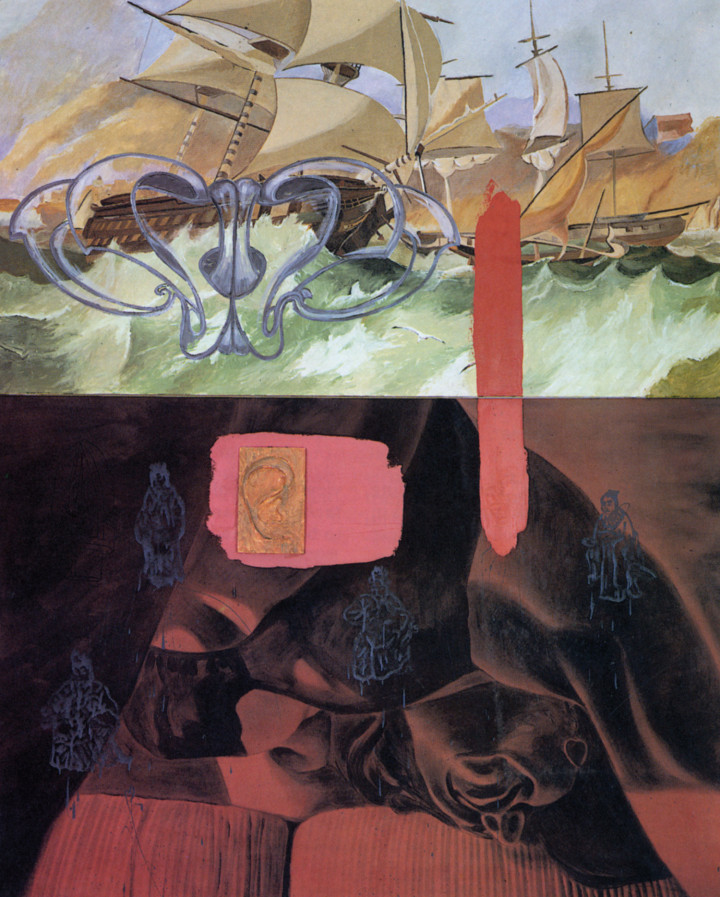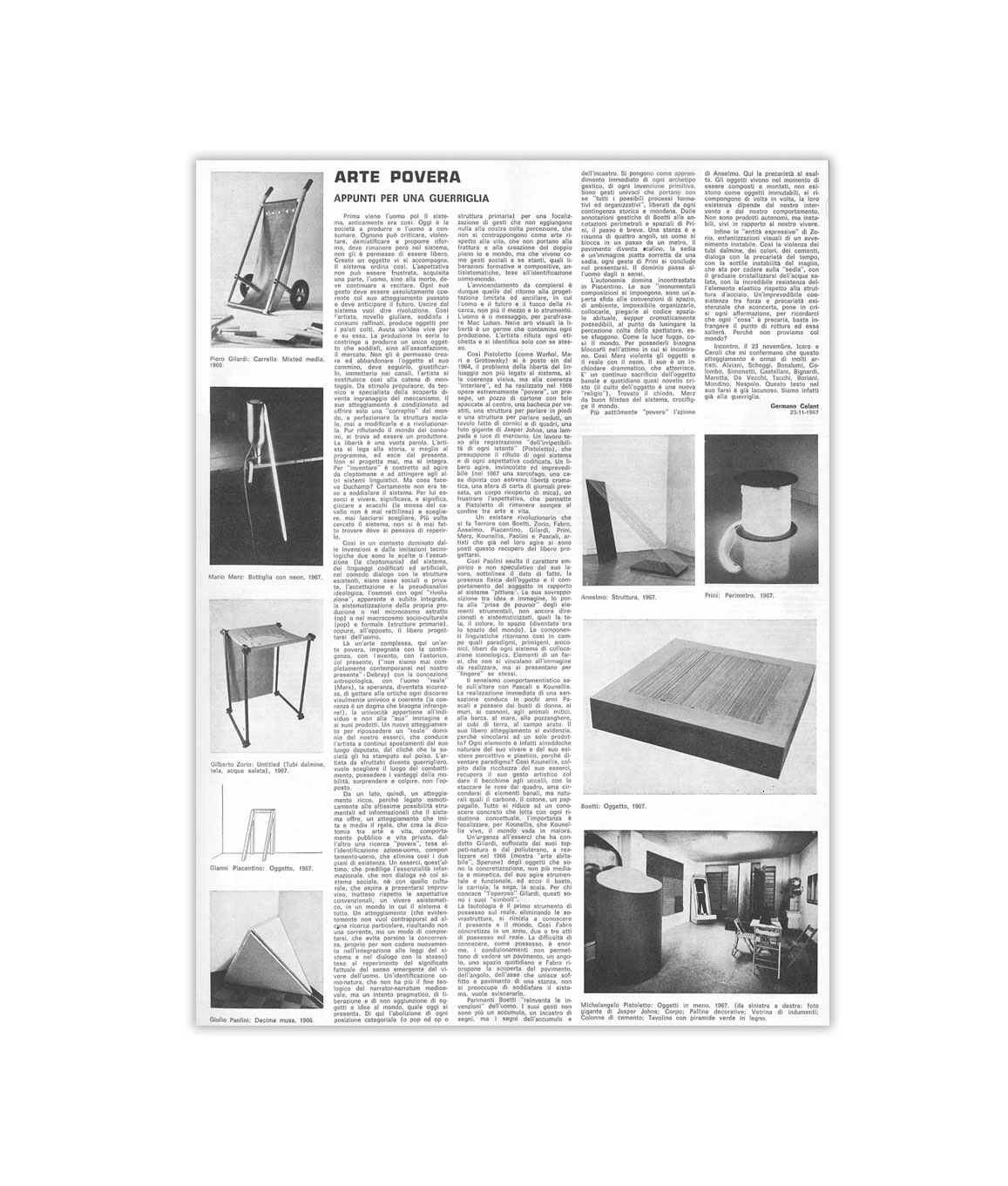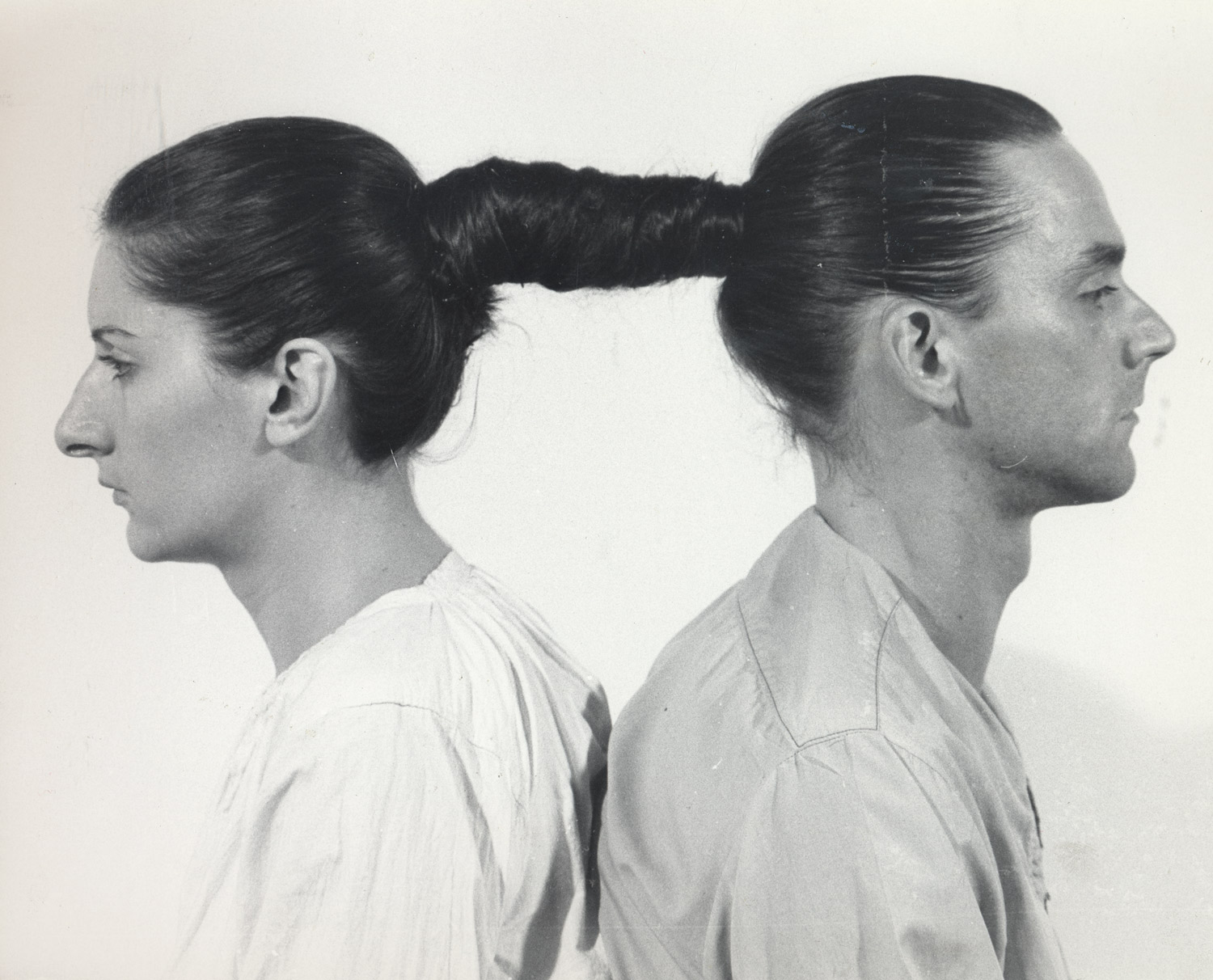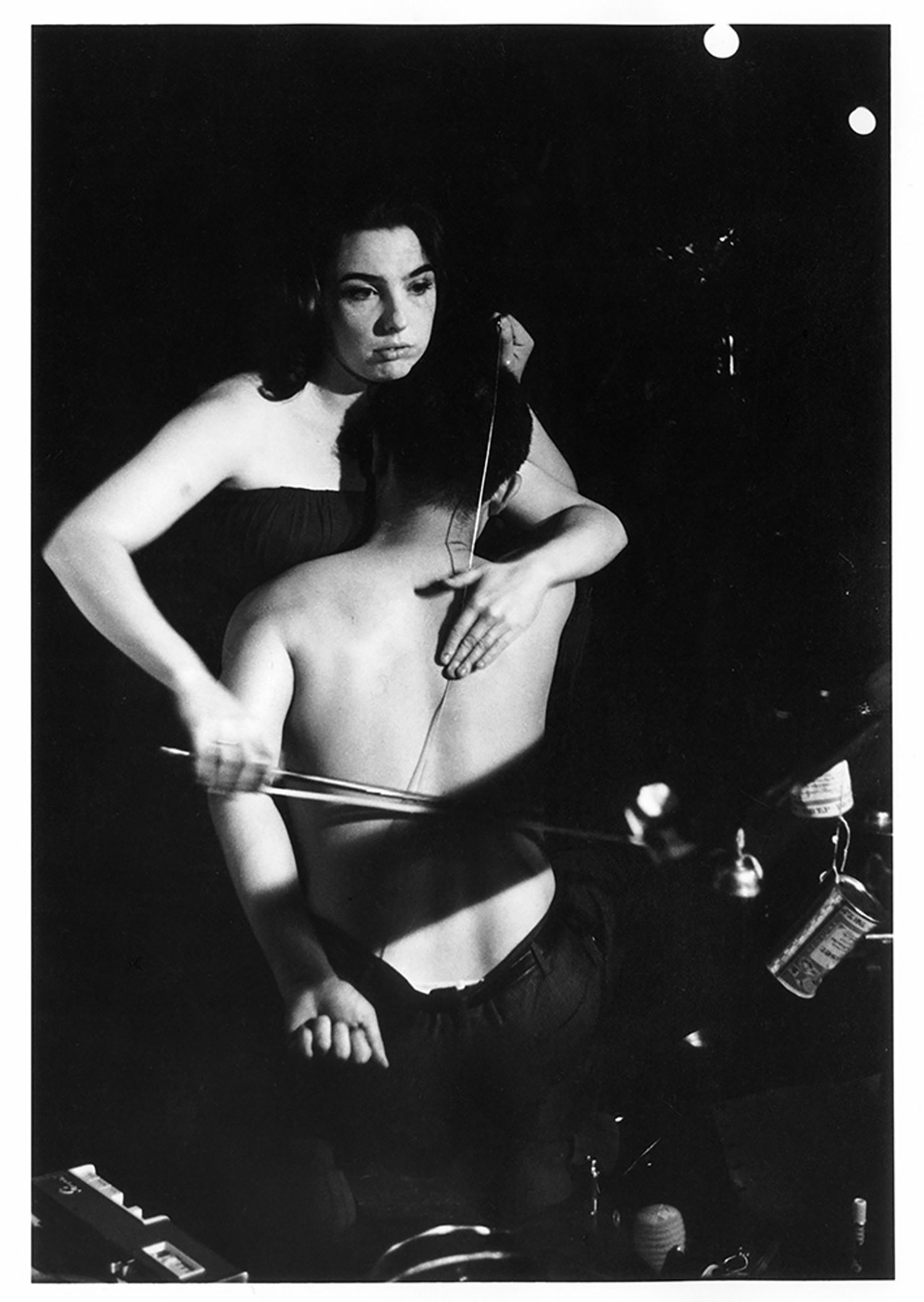
Robert Pincus-Witten: Are there important issues, or perceptions of criticality, that should be addressed in the discussion around your work, but are not? Are there areas that you feel have somehow been misapprehended or insufficiently discussed?
David Salle: No, it’s not that there are big areas that haven’t been addressed, it’s that as the work takes on more characters and more specifically wears its sensibility, you can’t expect commentary to keep pace with it. The lag is like a rubber band, the slack gets very great and we just take it out. The commentary advances, closes the gap, and the work advances, and there’s a big gap. Maybe the work is different in feeling and tone than it was a couple of years ago.
RPW: In what sense?
DS: Well, it seems to be classical.
RPW: Too big a term.
DS: It’s the only one that comes to mind.
RPW: Do you mean something like, the work is less immediately perceived in its connection to its conceptual origins?
DS: I would say the work is less immediately perceived in connection to anything else around it.
RPW: In other words, there’s nobody working like you.
DS: Right.
RPW: But there are devices, pictorial, small, single devices out there in the world which in fact people are making a good deal of.
DS: Dozens.
RPW: They’re making rather doubtful claims even. In a certain sense, aspects of painting and drawing are now being legitimized through the critical issues embodied in your work.
DS: Sure.
RPW: For example, aspects of pattern and decoration…
DS: It’s an accident… which overlaps things, images…
RPW: Yes, it’s that sort of thing…
DS: But there is a murky, misunderstood area: the notion of popular culture. It’s assumed my work is a commentary on popular culture. For years I’ve been saying the opposite. At least in my mind, my work has absolutely nothing to do with popular culture. Not only does it have nothing to do with popular culture in any kind of didactic, deliberate way, it simply doesn’t have anything to do with popular culture.
RPW: It is because what is presented is not a reconstruction of popular iconography, but in fact is an aesthetic and autonomous abstract experience that is, that has always been available ‘to an elite,’ but has never been available to popular culture?
DS: Something like that… since classicism can incorporate anything, or can be anything. But it’s a different feeling.
RPW: It’s a kind of false signal. But what you’re really getting is some kind of eternal, formal…
DS: Yes.
RPW: I’m beginning to see what you mean. One can look at your paintings and pick out recognizable references to popular culture, but in fact what one is dealing with is the creation of an authentic and isolated aesthetic world.
DS: Right. The other thing is that within that idea, there are very few real references in the work; and the references are not to popular culture or to art, but perhaps to art-like things. I think there’s confusion between an image that comes from somewhere and a reference. I don’t think of things as references unless they really refer to something else.
RPW: You’re not speaking of the indexicality of the work in terms of some sort of popular deconstruction?
DS: I think that the way to look at my work is some other way.
RPW: Can I suggest…
DS: Yes.
RPW: … These references. The information that one picks up, the references to art and references to the movies, what-have-you, are emblematic relationships; and an emblematic relationship to the movies as distinct from a lived relationship to them. Let’s say that they are false clues as distinct from specific clues. If they were specific clues one might be able to construct a narrative layering in your paintings, whereas the lack of specificity in the clue means that one really cannot make a narrative out of your pictures.
DS: Right. There’s no narrative.

RPW: You see, my way of thinking keys into your notion of the autonomy of the work, its abstractness.
DS: I think about a couple of different things that appear, that have lived their lives in the arena of popular culture, but I don’t think of them as popular. One is comedy, and the other is pornography. Those are two things that are important to me for themselves. Not as a comment on the society that produces them, but in their own mechanistic ways, you know, in a detached way.
RPW: In a detached mechanistic way, I think that’s what I was saying when I was using the term “emblematic…”
DS: Right.
RPW: But “emblematic” suggests that it’s an index, that it is an emblem of something.
DS: I would say mechanistic.
RPW: Mechanistic is better than emblematic. So, you know you have, say, the mechanism of comedy, the mechanism of eroticism, even pornography…
DS: Yes.
RPW: The art references are largely, it seems to me, references to ironic detachment. The movies would be another mechanism.
DS: But the art mechanisms are always about one thing. About how an image is simultaneously some molecules of paint that congeal in certain patterns and that at a certain distance appear recognizable as a painting.
RPW: You know, that’s an argument for pure painting somehow.
DS: No, it’s an image of reciprocity. You know, the French avant-garde.
RPW: Which French avant-garde, like the early modernists, like Pablo Picasso, Henri Matisse?
DS: No, like Manet.
RPW: Oh, like the 1860s, the 1870s.
DS: Yes, early.
RPW: The Manet-Monet.
DS: Yes, the Manet-Monet. The wavering. You know, the just barely held together nature of Manet’s paint. The fact that the paintings were always, I mean not to our standards but according to the standards by which they were painted, in danger of falling apart.
RPW: You mean falling apart as an image that coheres?
DS: Yes. The ambiguity in how the image is contextualized…
RPW: Contextualized not socially, contextualized on the canvas, you mean.
DS: On the canvas and how that represents its social dislocation. I think that’s the art, I mean that ‘is’ art, isn’t it?
from Flash Art n°123, 1985





